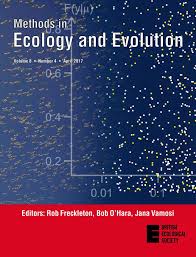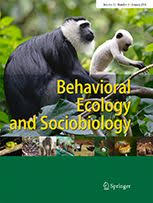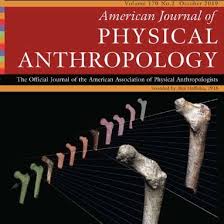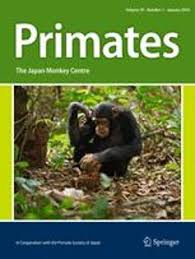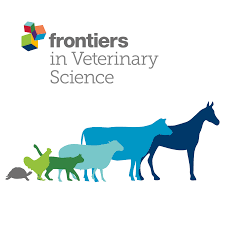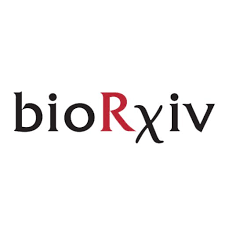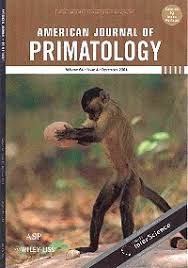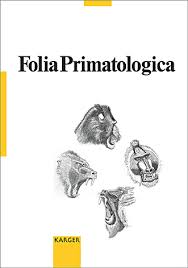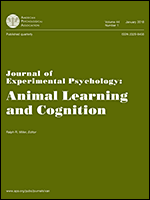Network measures in animal social network analysis: Their strengths, limits, interpretations and uses
Sebastian Sosa, Cédric Sueur, Ivan Puga‐Gonzalez
1. We provide an overview of the most commonly used social network measures in animal research for static networks or time‐aggregated networks.
2. For each of these measures, we provide clear explanations as to what they measure, we describe their respective variants, we underline the necessity to consider these variants according to the research question addressed, and we indicate considerations that have not been taken so far.
3. We provide a guideline indicating how to use them depending on the data collection protocol, the social system studied and the research question addressed. Finally, we inform about the existent gaps and remaining challenges in the use of several variants and provide future research directions.
Social stress in female Columbian ground squirrels: density-independent effects of kin contribute to variation in fecal glucocorticoid metabolites
Sebastian Sosa, F Stephen Dobson, Célia Bordier, Peter Neuhaus, Claire Saraux, Curtis Bosson, Rupert Palme, Rudy Boonstra, Vincent Viblanc
Social interactions among conspecifics can have marked effects on individual physiology, especially through their modulation of the stress axis by affecting the production of adrenal glucocorticoids (GCs). Previous research has focused on how individual GC levels may be influenced by social status, but few studies have considered how the balance between positive (e.g. cooperation) and negative (e.g. competition) social interactions shape individual GC levels. A lack of association between individual GC levels and social factors may be confounded by opposite effects of social competition on the one hand and social cooperation on the other. We tested for these effects in the Columbian ground squirrel (Urocitellus columbianus), a colonial rodent. During the breeding season, females are exposed to territorial unrelated neighbors and to territorial, but more tolerant, close kin. On one hand, territoriality and competition for resources led us to predict a positive association between local colony density and female GC levels. On the other, higher tolerance of philopatric kin females and known fitness benefits led us to predict a negative association between kin numbers and female GC levels. We compared levels of fecal cortisol metabolites (FCMs) in females at two different spatial scales during lactation: local (a female’s core territory during lactation, 30-m radius about her nest burrow) and colony-wide. At the local scale, female FCM levels were neither related to colony density nor to the number of co-breeding female kin, but FCM levels increased with age. At the colony scale, female FCM levels varied in a quadratic fashion with female kin numbers. FCM levels decreased by 15% from 0 to 1 co-breeding kin present and increased with > 1 kin present. Among females that had only one co-breeding kin present, daughters (and littermate sisters and mothers, but not significantly) led to a 14% reduction in FCM levels compared with females that had no kin. Our results reject the idea that local colony density is associated with increased GC levels this species, but indicate subtle (positive and negative) effects of kin on individual GC secretion. They further call into question the importance of the nature of social relationships in modulating the stress experienced by individuals.
Graph theory applied to dental topography helps isolating and comparing the sharpest tools of primate molars
Ghislain Thiery, Franck Guy, Vincent Lazzari, Sebastian Sosa
Dental topography can now graphically detect multiple elements, akin dental tools, which compose complex teeth such as molars. Still, comparisons are usually based on average values, which may conceal meaningful local variations of the topography. Here we propose to assimilate dental surface to a polygon graph, and dental tools to subgraphs of adjacent polygons, in order to isolate dental elements using network analysis tools. To test whether sharp dental tools are correctly identied, we use two network variables: (i) subgraph count and (ii) the sum of subgraphs’ Bacon indices. They are expected to correlate with dental complexity and sharpness, respectively.
Social networks predict immigration success in wild Japanese macaques
Tatsuro Kawazoe, Sebastian Sosa
Male migration is common in mammals and comes with associated benefits and costs. Male–male affiliative relationships are behavioural strategies that migrating males can adopt in order to maximise benefits and minimize costs. While we know that such strategies primarily serve to reduce tension, little is known about how they actually affect male immigration success. We investigated the influence of male–male affiliative relationships on immigration success in a group of wild Japanese macaques (Macaca fuscata). We used social network analysis to examine the distribution of male–male affiliative interactions and their association with immigration success. We found that visiting males with high eigenvector centralities and low weighted degree centralities were more likely to be integrated into the group. Other factors such as season, age-class, and dominance rank amongst visiting males did not affect …
Social style and resilience of macaques’ networks, a theoretical investigation
Ivan Puga-Gonzalez, Sebastian Sosa, Cedric Sueur
Group-living animals rely on efficient transmission of information for optimal exploitation of their habitat. How efficient and resilient a network is depend on its structure, which is a consequence of the social interactions of the individuals that comprise the network. In macaques, network structure differs according to dominance style. Networks of intolerant species are more modular, more centralized, and less connected than those of tolerant ones. Given these structural differences, networks of intolerant species are potentially more vulnerable to fragmentation and decreased information transmission when central individuals disappear. Here we studied network resilience and efficiency in artificial societies of macaques. The networks were produced with an individual-based model that has been shown to reproduce the structural features of networks of tolerant and intolerant macaques. To study network …
Impact of group management and transfer on individual sociality in Highland cattle (Bos taurus)
Sebastian OROZCO SOSA, Marie GS Pelé, Elise Debergue, Cédric Kuntz, Blandine Keller, Flora Siegwalt-Baudin, Camille Richer, Amandine Ramos, Cédric Sueur
The sociality of cattle facilitates the maintenance of herd cohesion and synchronisation, making these species the ideal choice for domestication as livestock for humans. However, livestock populations are not self-regulated, and farmers transfer individuals across different groups. Individuals consequently have to adapt to different group compositions during their lives rather than choose their own herd mates, as they would do in the wild. These changes may lead to social instability and stress, entailing potentially negative effects on animal welfare. In this study, we assess how the transfer of Highland cattle (Bos taurus) impacts individual and group social network measures. Four groups with nine different compositions and 18 individual transfers were studied to evaluate 1) the effect of group composition on individual social centralities and 2) the effect of group composition changes on these centralities. This study reveals that the relative stability of dyadic spatial relationships between changes in group composition or enclosure is due to the identities of transferred individuals more than the quantity of individuals that are transferred. Older cattle had higher network centralities than other individuals. The centrality of individuals was also affected by their sex and the number of familiar individuals in the group. This study reveals the necessity of understanding the social structure of a group to predict social instability following the transfer of individuals between groups. The developing of guidelines for the modification of group composition could improve livestock management and reduce stress for the animals concerned.
A multilevel statistical toolkit to study animal social networks: Animal Network Toolkit (ANT) R package
Sosa Sebastian, Ivan Puga-Gonzalez, Hu Feng He, Peng Zhang, Xiao Hua XIE, Cédric Sueur
How animals interact and develop social relationships in face of sociodemographic and ecological pressures is of great interest. New methodologies, in particular Social Network Analysis (SNA), allow us to elucidate these types of questions. However, the different methodologies developed to that end and the speed at which they emerge make their use difficult. Moreover, the lack of communication between the different software developed to provide an answer to the same/different research questions is a source of confusion. The R package ‘Animal Network Toolkit’(ANT) was developed with the aim of implementing in one package the different social network analysis techniques currently used in the study of animal social networks. Hence, ANT is a toolkit for animal research allowing among other things to: 1) measure global, dyadic and nodal networks metrics; 2) perform data randomization: pre-and post-network (node and link permutations); 3) perform statistical permutation tests. The package is partially coded in C++ for an optimal computing speed. The package gives researchers a workflow from the raw data to the achievement of statistical analyses, allowing for a multilevel approach: from the individual's position and role within the network, to the identification of interactional patterns, and the study of the overall network properties. Furthermore, ANT also provides a guideline on the SNA techniques used: 1) from the appropriate randomization technique according to the data collected; 2) to the choice, the meaning, the limitations and advantages of the network metrics to apply, 3) and the type of statistical tests to run.
The influence of demographic variation on social network stability in wild vervet monkeys
Christèle Borgeaud, Sebastian Sosa, Cédric Sueur ,Redouan Bshary
From a cognitive point of view, management and knowledge of social relationships is thought to be very challenging. Because of ecological and demographic constraints, relationships are likely to be prone to variation and hence need constant updating. Social network analysis is a potential tool to quantify the information that needs to be processed. However, despite the growing number of studies on social networks, few have focused on their dynamics and how they evolve across time. Here we present one of the rare studies that tests the influence of demographic variation on social relationships' stability through temporal analysis. Using field data collected on three wild groups of vervet monkeys, Chlorocebus aethiops, we first analysed the relationships' stability by running correlations between 3-month periods. Then, we investigated how natural demographic variation changed individual centralities (eigenvector) and strength of dyadic relationships within both grooming and proximity networks over a period of 2 years. In vervets, females are philopatric, while males emigrate from their natal group. Thus, we tested whether changes in demography had more influence on network centrality measures and relationship strength in females and their juveniles than in males. Correlations between periods yielded no evidence that predictability of future relationship quality declined with time from current relationship quality. In addition, male immigration was mostly responsible for increases in the core group members' centrality while male emigration had the opposite effect. Regarding dyadic relationships, we found inconsistent patterns that varied with respect to how age/sex and immigration/disappearance affected the network studied (grooming versus proximity). Our findings support the idea that social networks are dynamic structures that vary through time. Similar analyses on other species are needed to investigate which network features emerge as candidates responsible for variation in the complexity with which individuals keep track of relationships.
The influence of age on wild rhesus macaques' affiliative social interactions
Zhijie Liao, Sebastian Sosa Chengfeng Wu, Peng Zhang
The social relationships that individuals experience at different life stages have a non‐negligible influence on their lives, and this is particularly true for group living animals. The long lifespan of many primates makes it likely that these animals have various tactics of social interaction to adapt to complex changes in environmental or physical conditions. The different strategies used in social interaction by individuals at different life stages, and whether the position (central or peripheral) or role (initiator or recipient) of an individual in the group social network changes with age, are intriguing questions that remain to be investigated. We used social network analysis to examine age‐related differences in social interaction patterns, social roles, and social positions in three affiliative social networks (approach, allogrooming, and social play) in a group of wild rhesus macaques (Macaca mulatta). Our results showed that social interaction patterns of rhesus macaques differ between age classes in the following ways: i) young individuals tend to allocate social time to a high number of groupmates, older individuals prefer to focus on fewer, specific partners; ii) as they grow older, individuals tend to be recipients in approach interactions and initiators in grooming interactions; and iii) regardless of the different social interaction strategies, individuals of all ages occupy a central position in the group. These results reveal a possible key role played by immature individuals in group social communication, a little‐explored issue which deserves closer investigation in future research.
Social networks dynamics revealed by temporal analysis: An example in a non‐human primate (Macaca sylvanus) in “La Forêt des Singes”
Sebastian Sosa, Peng Zhang, Guénaël Cabanes
This study applied a temporal social network analysis model to describe three affiliative social networks (allogrooming, sleep in contact, and triadic interaction) in a non‐human primate species, Macaca sylvanus. Three main social mechanisms were examined to determine interactional patterns among group members, namely preferential attachment (i.e., highly connected individuals are more likely to form new connections), triadic closure (new connections occur via previous close connections), and homophily (individuals interact preferably with others with similar attributes). Preferential attachment was only observed for triadic interaction network. Triadic closure was significant in allogrooming and triadic interaction networks. Finally, gender homophily was seasonal for allogrooming and sleep in contact networks, and observed in each period for triadic interaction network. These individual‐based behaviors are based on individual reactions, and their analysis can shed light on the formation of the affiliative networks determining ultimate coalition networks, and how these networks may evolve over time. A focus on individual behaviors is necessary for a global interactional approach to understanding social behavior rules and strategies. When combined, these social processes could make animal social networks more resilient, thus enabling them to face drastic environmental changes. This is the first study to pinpoint some of the processes underlying the formation of a social structure in a non‐human primate species, and identify common mechanisms with humans. The approach used in this study provides an ideal tool for further research seeking to answer long‐standing questions about social network dynamics.
Intergroup Variation of Social Relationships in Wild Vervet Monkeys: A Dynamic Network Approach
Christèle Borgeaud, Sebastian Sosa3, Redouan Bshary, Cédric Sueur, Erica van de Waal
Social network analysis is a powerful tool that enables us to describe and quantify relationships between individuals. So far most of the studies rely on the analyses of various network snapshots, but do not capture changes over time. Here we use a stochastic actor-oriented model (SAOM) to test both the structure and the dynamics of relationships of three groups of wild vervet monkeys. We found that triadic closure (i.e., the friend of a friend is a friend) was significant in all three groups while degree popularity (i.e., the willingness to associate with individuals with high degree of connections) was significant in only two groups (AK, BD). The structure and dynamics of relationships according to the attributes of sex, matrilineand age differed significantly among groups. With respect to the structure, when analyzing the likelihood of bonds according to the different attributes, we found that individuals associate themselves preferably to individuals of the same sex only in two groups (AK, NH), while significant results for attachment to individuals of the same matriline were found also in two groups (BD, NH). With respect to the dynamics, i.e., how quickly relationships are modified, we found in two groups (AK, BD) that females' relationships were more prone to variation than males.' In the BD group, relationships within high-ranking matrilines were less stable than low-ranking ones while in the NH group, juveniles' relationships were also less stable than adults' ones. The intergroup variation indicates that establishing species-specific or even population specific characteristics of social networks for later between-species comparisons will be challenging. Although, such variation could also indicate some methodological issue, we are quite confident that data was collected similarly within the different groups. Our study therefore provides a potential new method to quantify social complexity according to natural demographic variation.
The Influence of Gender, Age, Matriline and Hierarchical Rank on Individual Social Position, Role and Interactional Patterns in Macaca sylvanus at ‘La Forêt des Singes’: A Multilevel Social Network Approach
Sebastian Sosa
A society is a complex system composed of individuals that can be characterized by their own attributes that influence their behaviors. In this study, a specific analytical protocol based on social network analysis was adopted to investigate the influence of four attributes (gender, age, matriline, and hierarchical rank) on affiliative (allogrooming) and agonistic networks in a non-human primate species, Macaca sylvanus, at the park La Forêt des Singes in France. The results show significant differences with respect to the position (i.e., centric, peripheral) and role (i.e., implication in the network cohesiveness) of an individual within a social network and hence interactional patterns. Females are more central, more active, and have a denser ego network in the affiliative social network tan males; thus, they contribute in a greater way to the cohesive structure of the network. High-ranking individuals are likely to receive fewer agonistic behaviors than low-ranking individuals, and high-ranking females receive more allogrooming. I also observe homophily for affiliative interactions regarding all attributes and homophily for agonistic interactions regarding gender and age. Revealing the positions, the roles, and the interactional behavioral patterns of individuals can help understand the mechanisms that shape the overall structure of a social network.
Using individual attributes to predict hierarchical position in a Macaca sylvanus group at ‘La forêt des singes’, Rocamadour
Sebastian Sosa
The Macaca genus is a biological model for animal societies, known for its social structuration by age, sex, and kinship. We managed to establish a mathematical model, through multiple regression tests, that emphasizes the relationship between several individual attributes (sex, age, matrilineal belonging) with hierarchical rank among a Barbary macaque (Macaca sylvanus) group (N = 50) observed during 11 months at ‘La forêt des singes’ in Rocamdour, France. We established two models according to sex, one for males and one for females, explaining 99.1% and 99.4% of the hierarchical rank variance respectively. Our study is the first step in studying the weight of each attribute in hierarchical structuration among this species and consequently the individual hierarchical rank determination. Such a model could be used as the basis for future comparative studies among the Macaca genus.
Structural Architecture of the Social Network of a Non-Human Primate (Macaca sylvanus): A Study of Its Topology in La Forêt des Singes, Rocamadour
Sebastian Sosa
For a decade, technological or natural networks have appeared to have a common mathematical architecture. This type of architecture has a node connectivity which follows a power law distribution. This architecture confers to these networks a resistance property to the loss of nodes. Such properties are advantageous for evolutional networks through time. Thus, this architecture can be expected in animal social networks. Another characteristic commonly met concerns the structuration of the network into communities by the mechanism of assortative mixing by vertex degree (i.e. by the number of ties individuals have). Such a structure is a reflection of evolutional mechanisms: the preferential attachment and the triadic closure processes. Using recent analytical techniques on an affiliative social network in a non-human primate species (Macaca sylvanus), we analysed the mathematical architecture and its properties. We demonstrate that in spite of the use of a recent protocol supposed to permit this type of analysis, the type of distribution cannot be clearly determined, encouraging us to carefully interpret the results obtained until then. Nevertheless, we observed interesting properties of the network at an ecological and evolutional level with network resilience that allows a cohesive society to be maintained even when faced with a catastrophe (high predation, epidemic).
Editorial: Social networks analyses in primates, a multilevel perspective
Cédric Sueur, Valéria Romano, Sebastian Sosa, Ivan Puga-Gonzalez
Research using social network analyses has been booming since the start of the 2000s, with studies not only in humans but also many nonhuman species. Primates are no exception, with the number of retrievable items using the keywords “social networks primates” increasing tenfold from 2000 to 2017 (Fig. 1a). Studies are in various domains including psychology, behavioral sciences, and sociology, as well as neurosciences and infectious diseases (Fig. 1b). To our knowledge, several special issues and books have focused on animals (Croft et al. 2008; Whitehead 2008; Krause et al. 2009; Sheldon 2015; Sueur and Mery 2017) but with only one special issue devoted to primates (Sueur et al. 2011). In the last decade studies have evolved from describing structures (Manno 2008; Carter et al. 2013; Bret et al. 2013) and topologies of social networks or centrality of group members according to their sociodemographic characteristics (Lusseau and Newman 2004; Kanngiesser et al. 2011), to a more holistic approach where the function and evolution of networks are linked to ecological factors, behavioral mechanisms, network topologies, and vice versa (Brent et al. 2013; Fisher et al. 2016; Balasubramaniam et al. 2018). In this new special issue, our aim is to present this integrative and multilevel approach along with state-of-the-art methodologies and theoretical approaches for the study of primate social networks.
Mechanisms of network evolution: a focus on socioecological factors, intermediary mechanisms, and selection pressures
Cédric Sueur, Valéria Romano, Sebastian Sosa, Ivan Puga-Gonzalez
Since group-living animals are embedded in a network of social interactions, socioecological factors may not only affect individual behavioral strategies but also the patterning of group-level social interactions, i.e., the network structure. These co-variations between socioecological factors, individual behavior, and group-level structure are important to study since ecological factors may strongly influence animal health outcomes and reproductive success. Besides factors such as social information and/or infectious agents, with far-reaching individual fitness consequences, seem independent of individuals’ own social interactions but directly affected by the topology of the social network. This paper reviews how socio-ecological pressures, i.e., causal factors (food distribution, predation, and infectious agent risk), via intermediary mechanisms (stress, information sharing, and mating system), may affect individual social behavior and consequently, social network topology. We also discuss how evolutionary driving forces, genetic (i.e., genes) and cultural (i.e., learned behavior) selection, may result in a specific composition of individuals’ social strategies that produce network topologies that might be optimized to specific socio-ecological conditions. We conclude that studies focusing on whether and how well networks resist changing conditions might provide a better understanding of the rules underlying individual behavior, which in turn influences network topology—a process we have called network evolution. Evolutionary processes may favor a group phenotypic composition, thus a network topology. This has been referred to as a “collective social niche construction”.
Mechanisms of reciprocity and diversity in social networks: a modeling and comparative approach
Ivan Puga-Gonzalez, Julia Ostner, Oliver Schülke, Sebastian Sosa, Bernard Thierry, Cedric Sueur
Three mechanisms have been proposed to underlie reciprocation of social behaviors in gregarious animals: “calculated reciprocity,” “emotional bookkeeping,” and “symmetry-based reciprocity.” Among these explanations, emotional book-keeping has received the broadest support from experimental and observational studies. On the other hand, 3 individual-based models have shown that reciprocation may emerge via “symmetry-based reciprocity,” “emotional bookkeeping,” or a combination of both mechanisms. Here, we use these 3 models to assess their relative fit with empirical data on reciprocation and social network structure across different groups and species of macaques. We collected grooming data from 14 groups and 8 macaque species and simulated each group in each model. We analyzed and quantitatively compared social network metrics of the empirical and the models’ grooming networks. The 3 models captured fairly well the features of observed networks, and fitted data from wild groups better than captive ones. The emotional bookkeeping model seemed on average to fit slightly better the social networks metrics observed in empirical data, but failed to reproduce some grooming patterns. The symmetry-based models, on the other hand, fitted better other network parameters (e.g., modularity). No model generally fitted the data better than the others, and the fit with some metrics (e.g., modularity, centralization index) was low even after optimization. Thus, our analyses indicate that in the models social interactions may be simpler than in reality and models may miss social processes (e.g., third-party awareness).
The influence of phylogeny, social style, and sociodemographic factors on macaque social network structure
Krishna N. Balasubramaniam, Brianne A. Beisner, Carol M. Berman, Arianna De Marco, Julie Duboscq, Sabina Koirala, Bonaventura Majolo, Andrew J. MacIntosh, Richard McFarland, Sandra Molesti, Hideshi Ogawa, Odile Petit, Gabriele, Schino, Sebastian Sosa, Cédric Sueur, Bernard Thierry, Frans B. M. de Waal, Brenda McCowan
Among nonhuman primates, the evolutionary underpinnings of variation in social structure remain debated, with both ancestral relationships and adaptation to current conditions hypothesized to play determining roles. Here we assess whether interspecific variation in higher‐order aspects of female macaque (genus: Macaca) dominance and grooming social structure show phylogenetic signals, that is, greater similarity among more closely‐related species. We use a social network approach to describe higher‐order characteristics of social structure, based on both direct interactions and secondary pathways that connect group members. We also ask whether network traits covary with each other, with species‐typical social style grades, and/or with sociodemographic characteristics, specifically group size, sex‐ratio, and current living condition (captive vs. free‐living). We assembled 34–38 datasets of female‐female dyadic aggression and allogrooming among captive and free‐living macaques representing 10 species. We calculated dominance (transitivity, certainty), and grooming (centrality coefficient, Newman's modularity, clustering coefficient) network traits as aspects of social structure. Computations of K statistics and randomization tests on multiple phylogenies revealed moderate‐strong phylogenetic signals in dominance traits, but moderate‐weak signals in grooming traits. GLMMs showed that grooming traits did not covary with dominance traits and/or social style grade. Rather, modularity and clustering coefficient, but not centrality coefficient, were strongly predicted by group size and current living condition. Specifically, larger groups showed more modular networks with sparsely‐connected clusters than smaller groups. Further, this effect was independent of variation in living condition, and/or sampling effort. In summary, our results reveal that female dominance networks were more phylogenetically conserved across macaque species than grooming networks, which were more labile to sociodemographic factors. Such findings narrow down the processes that influence interspecific variation in two core aspects of macaque social structure. Future directions should include using phylogeographic approaches, and addressing challenges in examining the effects of socioecological factors on primate social structure.
A longitudinal network analysis of social dynamics in rooks Corvus frugilegus: repeated group modifications do not affect social network in captive rooks
Palmyre H. Boucherie, Sebastian Sosa, Cristian Pasquaretta, Valérie Dufoura
Numerous studies have investigated the remarkable variation of social features and the resulting structures across species. Indeed, relationships are dynamic and vary in time according to various factors such as environmental conditions or individuals attributes. However, few studies have investigated the processes that stabilize the structures within a given species, and the behavioral mechanisms that ensure their coherence and continuity across time. Here, we used a dynamic actor-based model, RSiena, to investigate the consistency of the temporal dynamic of relationships of a group of captive rooks facing recurrent modifications in group composition (i.e., the loss and introduction of individuals). We found that changes in relationships (i.e., formation and removal) followed consistent patterns regardless of group composition and sex-ratio. Rooks preferentially interacted with paired congeners (i.e., unpopular attachment) and were more likely to form relationships with individuals bonded to a current social partner (i.e., “friends of friends”, or triadic closure). The sex of individuals had no effect on the dynamic of relationships. This robust behavioral mechanisms formed the basis of inter-connected networks, composed of sub-structures of individuals emerging from the enmeshment of dyadic and triadic motifs. Overall, the present study reveals crucial aspects of the behavioral mechanisms shaping rooks social structure, suggesting that rooks live in a well-integrated society, going far beyond the unique monogamous pair-bond.
Geometry, features, and panoramic views: Ants in rectangular arenas.
Wystrach, Antoine Cheng, Ken Sosa, Sebastian Beugnon, Guy
When tested in rectangular arenas, the navigational behavior of the ant Gigantiops destructor can produce results similar to vertebrates. Such results are usually interpreted as supporting the ability of animals to segregate spatial geometry and features. Here, we combine a detailed analysis of ants' paths with panoramic images taken from the ant's perspective that can serve as a basis for developing view-based matching models. The corner choices observed in ants were better predicted by the use of panoramic views along with a simple matching process [rotational image difference function (rIDF)] than by models assuming segregation of geometry and features (G/F). Our view-based matching model could also explain some aspects of the ants' path (i.e., initial direction, length) resulting from the different visual conditions, suggesting that ants were using such a taxon-like strategy. Analyzed at the individual level, the results show that ants' idiosyncratic paths tend to evolve gradually from trial to trial, revealing that the ants were partially updating their route memory after each trial. This study illustrates the remarkable flexibilities that can arise from the use of taxon-like strategies and stresses the importance of considering them in vertebrates. (PsycINFO Database Record (c) 2016 APA, all rights reserved)
